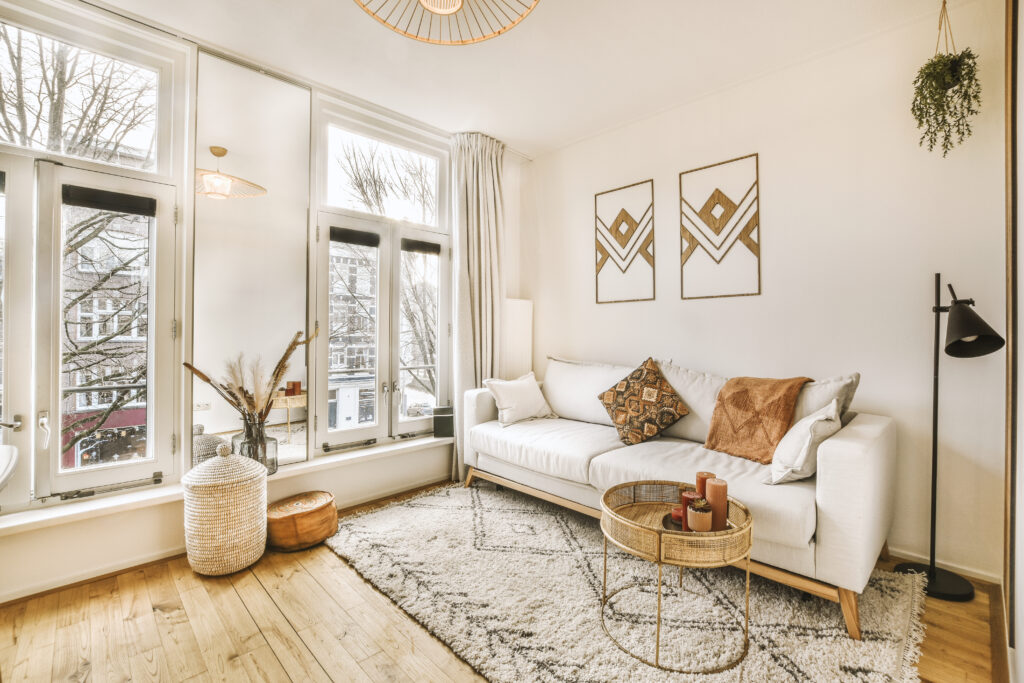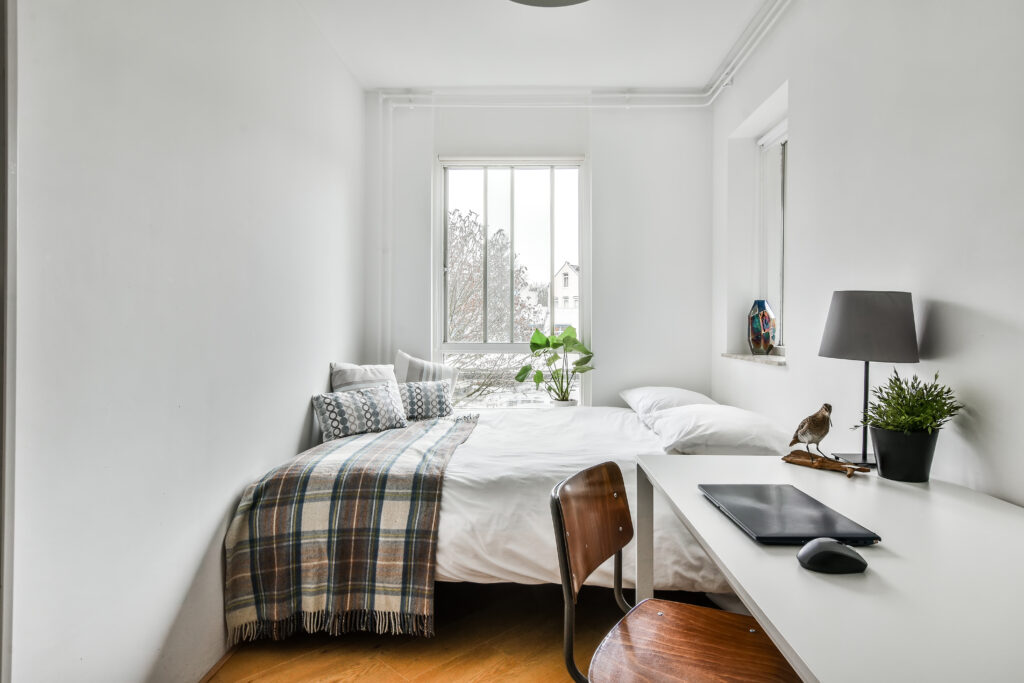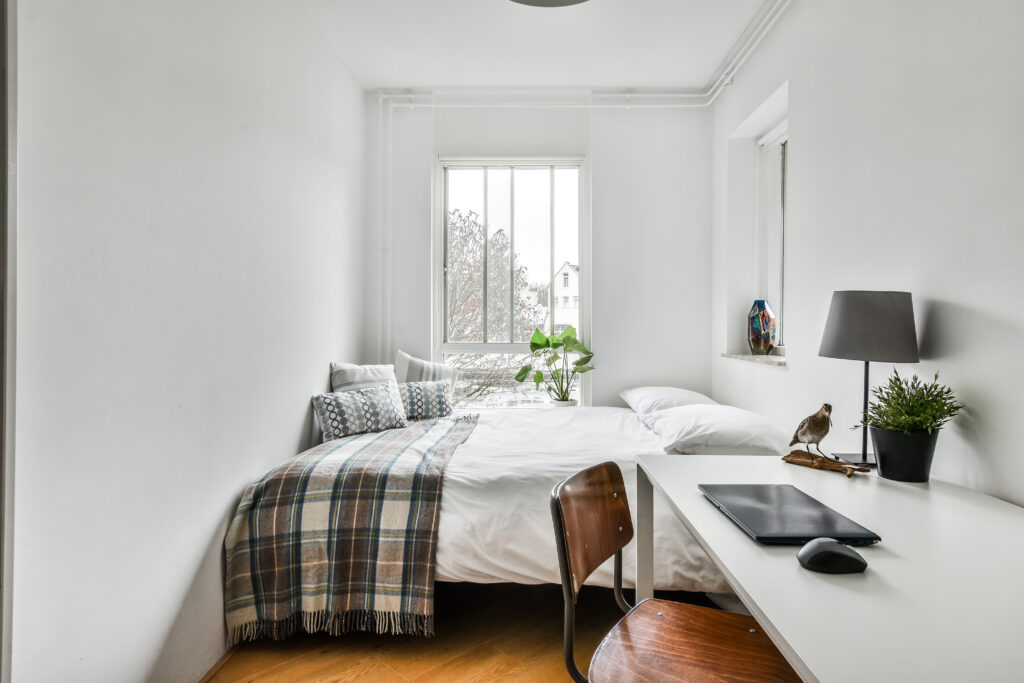Clicks in Confined Spaces: A Guide for Real Estate Photographers
The art of photographing small spaces can be a tricky one. It requires a unique approach to properly showcase the potential of a home or property, especially when working within the confines of compact rooms or apartments. But don’t worry! We’ve got your back. Here’s a guide with some crucial tips to help you master the art of real estate photography in small, confined spaces. Read on!
Making Use of Natural Light and Artificial Lighting

Navigating lighting in teeny tiny spaces can seem like solving a complex puzzle.
But trust me, it’s not as hard as it seems! Here’s the deal – natural light is your secret weapon. It’s a game-changer. It has this magical ability to make even the smallest of spaces look spacious, cheerful, and inviting.
So, when should you schedule your shoots? The answer is simple – during the day when the sun is generous with its rays. Let’s throw those curtains wide open and pull up those blinds. Welcome the sunlight to pour in and work its charm!
But what about those days when Mother Nature isn’t cooperating, or parts of the room that the sunlight can’t reach? That’s where artificial lighting comes in. It’s the supporting actor, ready to step up when natural light can’t take the center stage. A well-placed lamp or two can illuminate those dark corners, adding depth and detail to your photos. It’s all about the balance – balancing the natural and artificial light to make the small space shine in your photographs.
But remember, it’s not about creating a light show – subtlety is key! Keep it real, keep it natural, and let your photos tell the story of the space. Now, go on and shed some light on your next small space shoot!
The Art of Composition and Framing

Alright, let’s dive into composition and framing – it’s like choosing the perfect outfit for your property.
A well-composed shot can really put a small space in its best light. Start by showing as much of the room as you can. Go for that wide-angle lens, it’s your new best friend. It’ll help you take in the whole scene, making the room appear more spacious.
But, here’s the kicker – be careful not to overdo it. You don’t want to distort the space and make it look like a fun house mirror room. Keeping things real is the name of the game in real estate photography, so always strive for authenticity.
Next, let’s chat about framing. It’s like the window that allows potential buyers to peek into the property. Use it to highlight the best features of the room. Maybe it’s a charming fireplace, a bay window, or a unique architectural detail. Frame it right and let it take the spotlight.
Remember, every room, no matter how small, has its own personality. Use composition and framing to capture its unique character and charm. Now, go out there and frame your next masterpiece!
Experimenting with Different Perspectives

Let’s play around with perspectives a bit, shall we?
Think of it as giving the tour of the property from various viewpoints. Every nook and cranny of the space has a story to tell, and changing your shooting perspective can help bring those stories to life.
Here’s the thing, straight-on shots are great – they’re clean, they’re classic, and they get the job done. But, why not add a little bit of spice? Try shooting from a low angle to emphasize high ceilings or unique architectural details. Or, go for a high angle to show off a beautiful floor or an interesting layout. You could even experiment with diagonal or tilted angles for a dynamic, dramatic effect.
Here’s a fun tip – try playing the part of a potential buyer. Imagine walking into the space for the first time. What’s catching your eye? What are you naturally drawn to? Let your camera follow your gaze and capture those moments.
Remember, the goal here isn’t to reinvent the wheel. It’s to use different perspectives to showcase the full potential of the property, to bring out its character, its charm, and its uniqueness. So, the next time you’re out on a shoot, remember to mix it up a little. Play around with perspectives, add that extra dimension to your work, and let your photos truly represent the essence of the space.
The Role of Post-Processing

Alright, now that you’ve got those stunning shots, it’s time to jazz them up a bit.
That’s right! We’re stepping into the world of post-processing, where your photos get their finishing touches. Consider this stage as the makeup artist of your photoshoot. It helps to enhance the natural beauty of your shots, not to overshadow it.
We’re not talking about turning your images into an unrealistic rendition of the space. Nope! Remember, we’re all about authenticity here. We want to keep things looking as real as possible while adding that extra bit of ‘oomph.’ A slight boost in brightness here, a touch of contrast there, perhaps a bit of sharpening – just enough to make your images pop and catch the eye of potential buyers.
The main goal of post-processing in real estate photography is to ensure that your photos accurately represent the property while highlighting its best features. It’s like the fairy godmother that turns the pumpkin into a carriage – it enhances, not transforms.
Post-processing is like the cherry on top of your photography sundae. It’s that final, crucial step that can take your images from “pretty good” to “wow!” So, ready to turn on your digital touch-up magic? Let’s take your real estate photography game to the next level!
Ready to sell your property? Give us a call today and learn more about our professional photography services and marketing that can boost your property listing!
Plus, explore our virtual assistant coaching program to level up your business. Don’t forget to tune into our new podcast for even more valuable insights!
